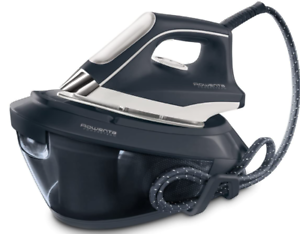If the vessel is employed to get steam, it’s known as a steam generator.
For detailed context visit Dampfkessel astebo Deutschland . The heat transfer will manifest itself by radiation or physical phenomenon, when a radiation supply, like centered radiation, provides energy, if a cooling medium within the primary circuit of a reactor provides energy from nuclear fissure heat, a product from Associate in Nursing energy-releasing chemical action heats the warmth money changer, resistance heating works with power, Waste heat is fed to a turbine in an exceedingly combined cycle power station or an indoor combustion engine or ICEetc. For customized manufactures in Germany visit Dampfkessel astebo Deutschland.
Cylindrical fire-tube boiler
Flued boiler
From 1804 ahead Trevithick made tiny low two-pass or come back flue boiler for semi-portable and locomotive engines. The Cornish boiler developed around 1812 by technologists was each stronger and additional economical than the easy boilers that preceded it. It consisted of a cylindrical cistern around twenty-seven feet (8.2 m) long and seven feet (2.1 m) in diameter and had a coal hearth grate placed at one finish of one cylindrical tube regarding 3 feet wide that passed lengthwise within the tank.

Multi-tube boilers
Before the Rainhill trials of 1829 Henry Booth, money dealer of the Liverpool and Manchester Railway advised George Stephenson, a theme for a multi-tube one-pass horizontal boiler created from 2 units: a furnace encircled by water areas and a boiler barrel consisting of 2 telescopic rings within that were mounted twenty-five copper tubes; the tube bundle occupied abundant of the water house within the barrel and immensely improved heat transfer. previous Saint George instantly communicated the theme to his son parliamentarian and this was the boiler used on Stephenson’s Rocket, outright winner of the trial. the look shaped the idea for all future Stephensonian-built locomotives, being instantly haunted by different constructors; this pattern of the fire-tube boiler has been designed ever since.
Boiler sorts
Fire-tube boiler
A voluminous coal hearth was lit on a grate to a lower place the marginally dish-shaped pan that gave a tiny heating surface; there was so an excellent deal of warmth wasted up the chimney. In later models, notably by John Smeaton, the heating surface was significantly inflated by creating the gases heat the boiler sides, passing through a flue. Smeaton more elongated the trail of the gases by means that of a spiral labyrinth flue to a lower place the boiler. These under-fired boilers were employed in varied forms throughout the Eighteenth Century. Some were of spherical section (haycock). an extended version on an oblong arrange was developed around 1775 by Boulton and Watt (wagon prime boiler). this is often what’s these days referred to as a three-pass boiler, the hearth heating the undersurface, the gases then passing through a central square-section hollow flue and eventually round the boiler sides.
The generated heat is transferred to water to form steam, the method of boiling. This produces saturated steam at a rate that may vary in step with the pressure on top of the boiling water. the upper the chamber temperature, the quicker the steam production. The saturated steam so made will then either be used instantly to supply power via a rotary engine and generator, instead is also more superheated to a better temperature; this notably reduces suspended water content creating a given volume of steam manufacture additional work and creates a bigger gradient, that helps cut back the potential to create condensation. Any remaining heat within the combustion gases will then either be exhausted or created to meet up with the associate saver, the role of that is to heat the feedwater before it reaches the boiler.





